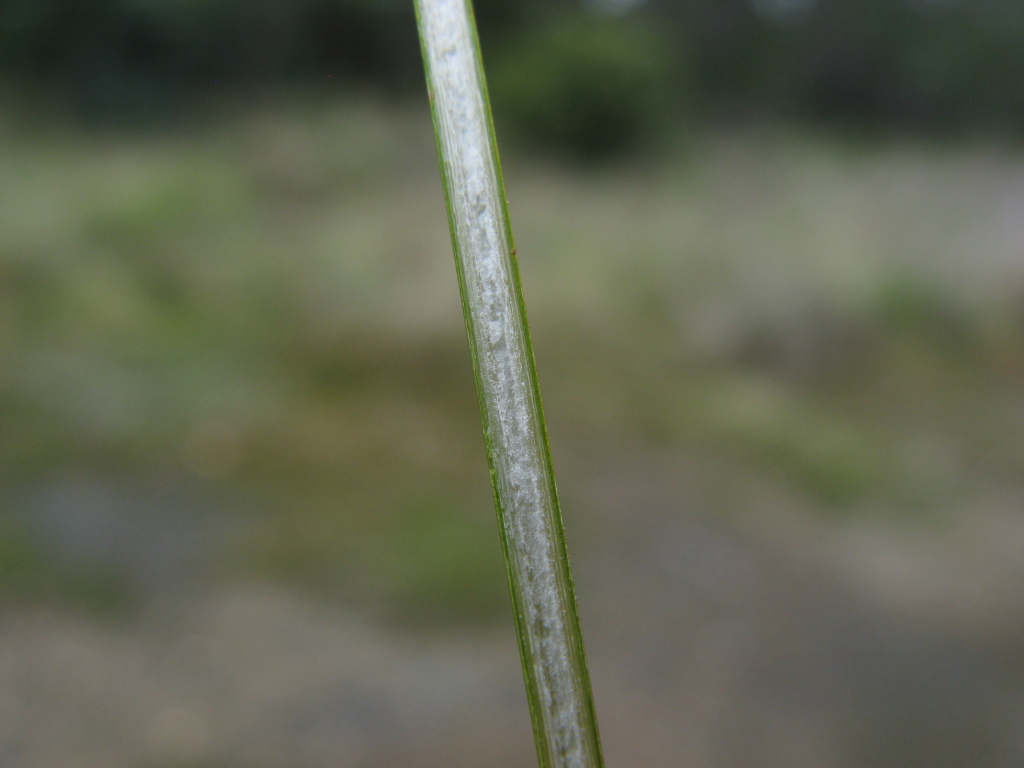Juncus kraussii subsp. australiensis
(Buchenau) Snogerup Sea RushTufted, stoutly rhizomatous perennial. Culms erect, dark green, rigid, 30–120 cm high, each with c. 1–3 leaves and several shining, light brown cataphylls towards base; pith dense, uninterrupted, permeated with vascular bundles (visible in transverse section). Leaf-blades pungent, terete, culm-like; pith similar to that of culms; auricles absent. Inflorescence with several to many radiating major branches, branches usually visible, flowers clustered towards the ends of the ultimate branchlets; primary bract erect and pungent, continuous with culm; prophylls absent. Tepals with a reddish-brown band either side of midrib, equal or subequal, 2.5–3 mm long, firm-textured for the greater part, the outer 3 mucronate, the inner 3 obtuse with relatively wide membranous margins at the tip (becoming acute when these erode); stamens 3–6; anthers white, c. 0.5–1 mm long. Capsules red-brown or occasionally golden-brown, darker (often blackish) in the upper half, shining, ovoid to ellipsoid, 2.5–3 mm long, contracting to a short fragile mucro, subequal to tepals; valves rather thick-walled, the outer faces shallowly concave in the upper part; seeds 0.5–1 mm long, apiculate at one or both ends. Flowers Dec.–Mar., seeds mostly shed Dec.–May.
Wim, GleP, Brid, VVP, GipP, OtP, WaP, Gold, CVU, DunT, EGL, EGU, WPro, OtR, Strz. Also WA, NT, Qld, NSW, Tas. New Zealand, ?southern Africa. Frequent in saline and brackish wetlands along the coast, less common in similar sites inland.
Albrecht, D.E. (1994). Juncus. In: Walsh, N.G.; Entwisle, T.J., Flora of Victoria Vol. 2, Ferns and Allied Plants, Conifers and Monocotyledons, pp. 197–233. Inkata Press, Melbourne.
 Spinning
Spinning


